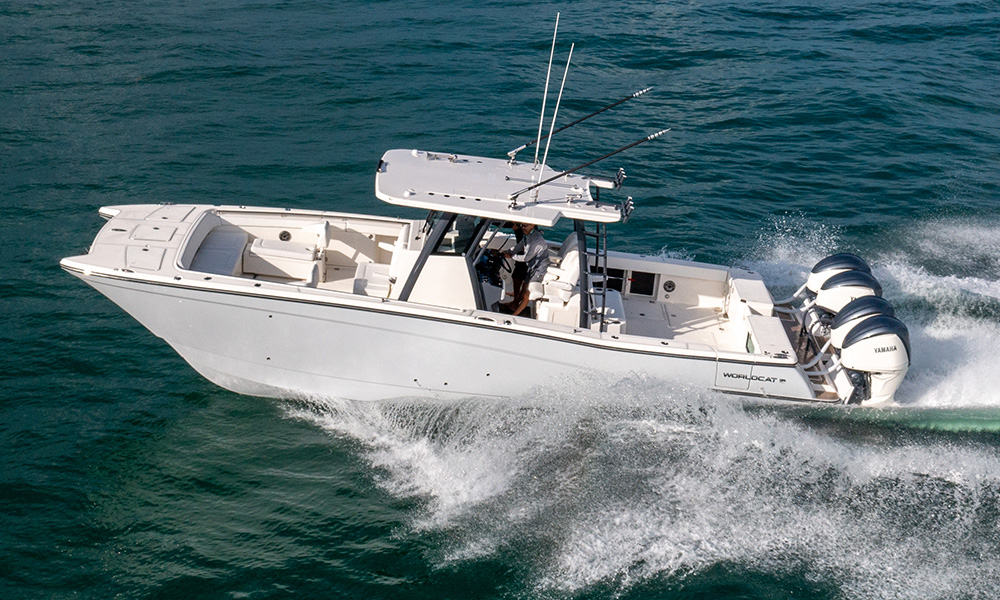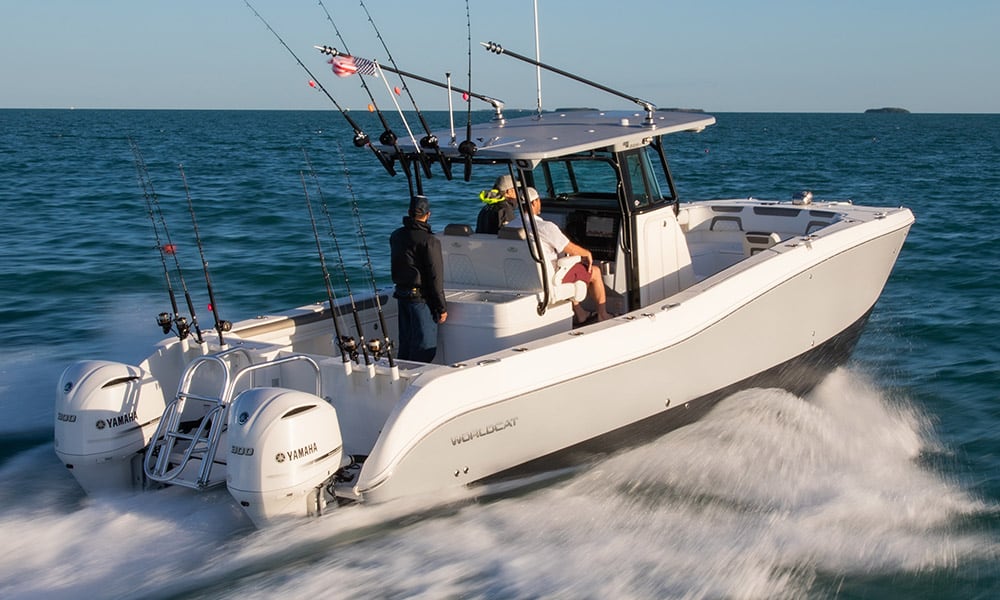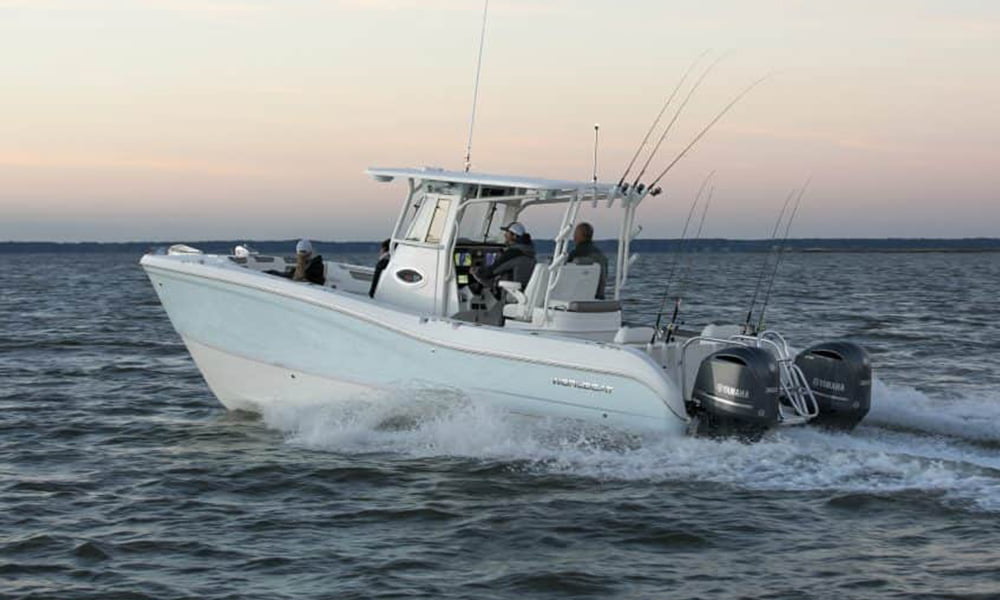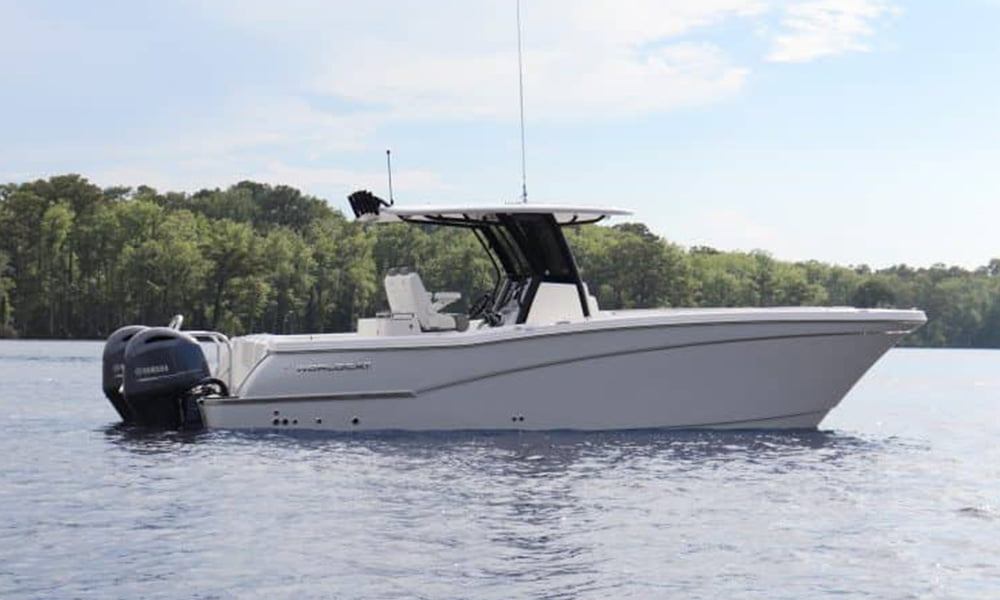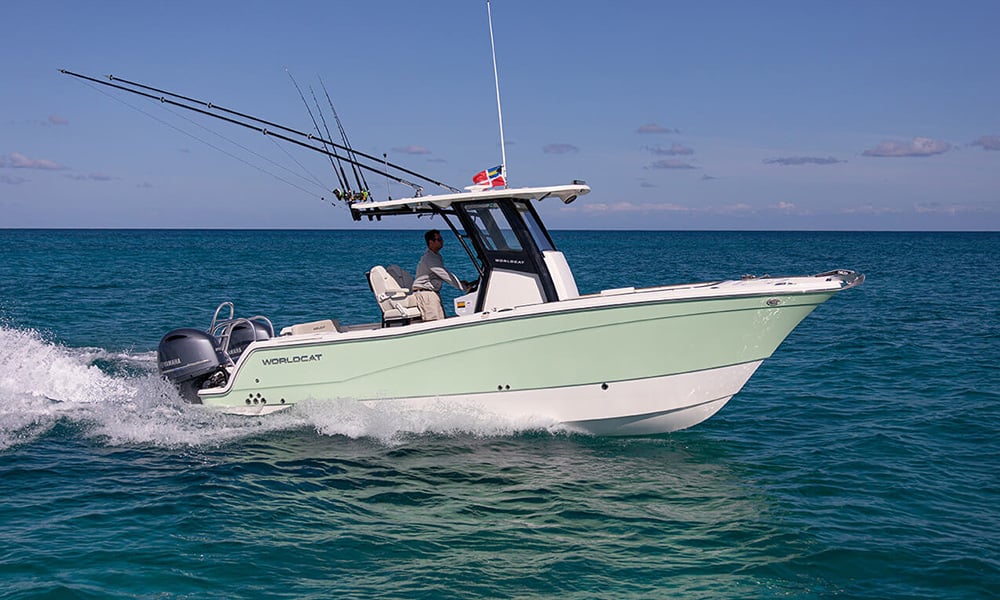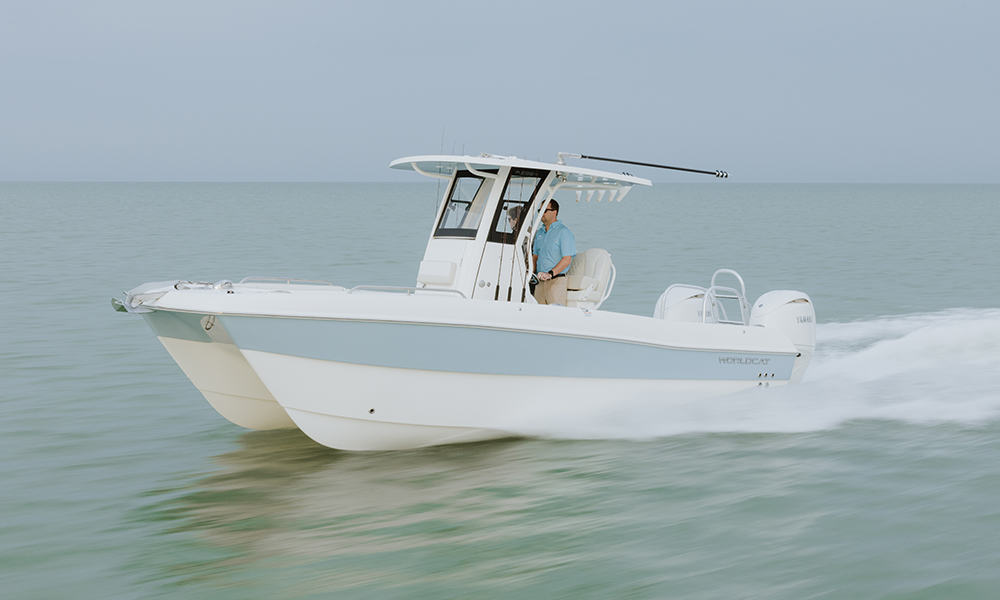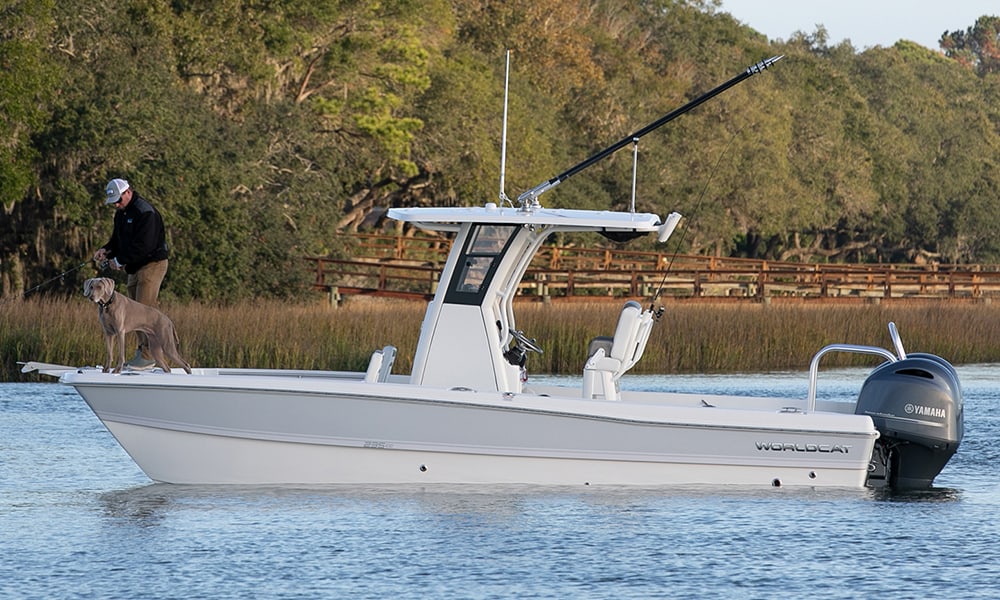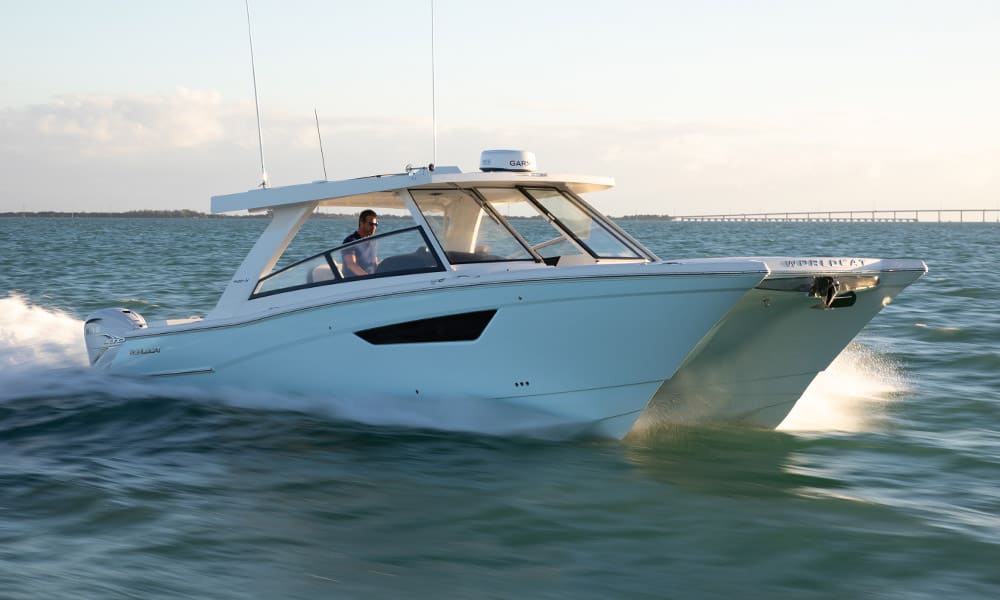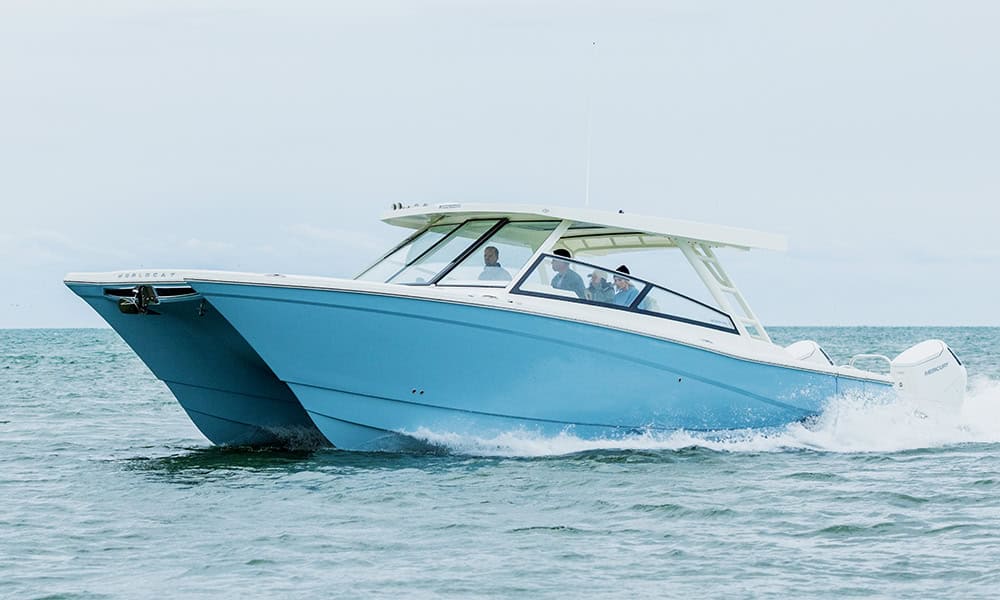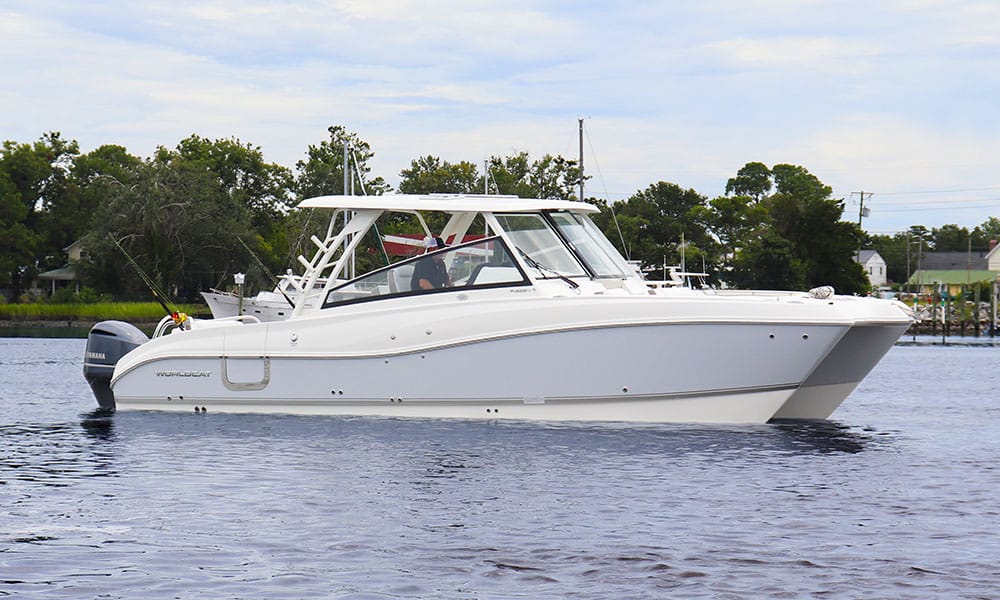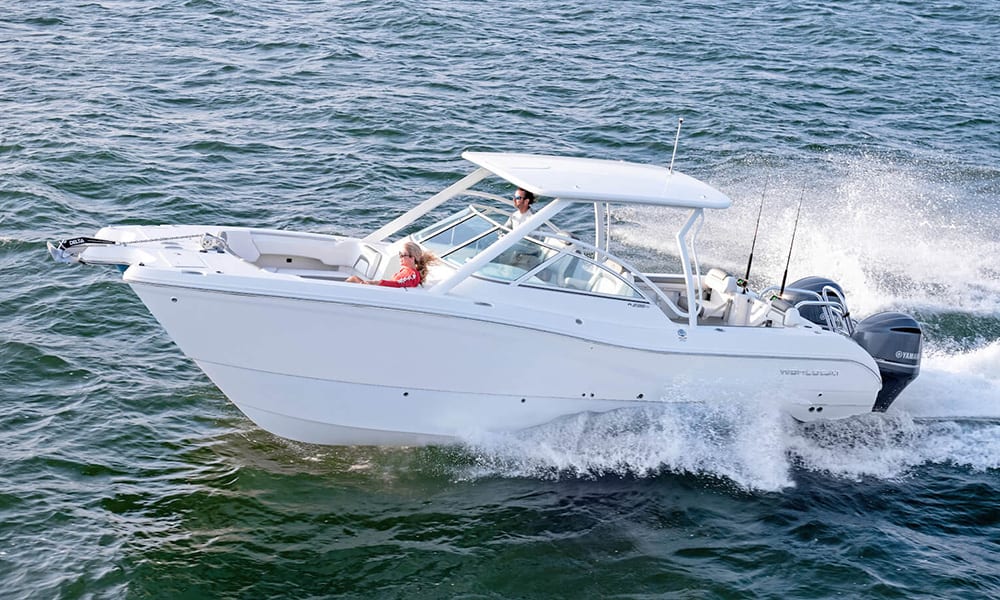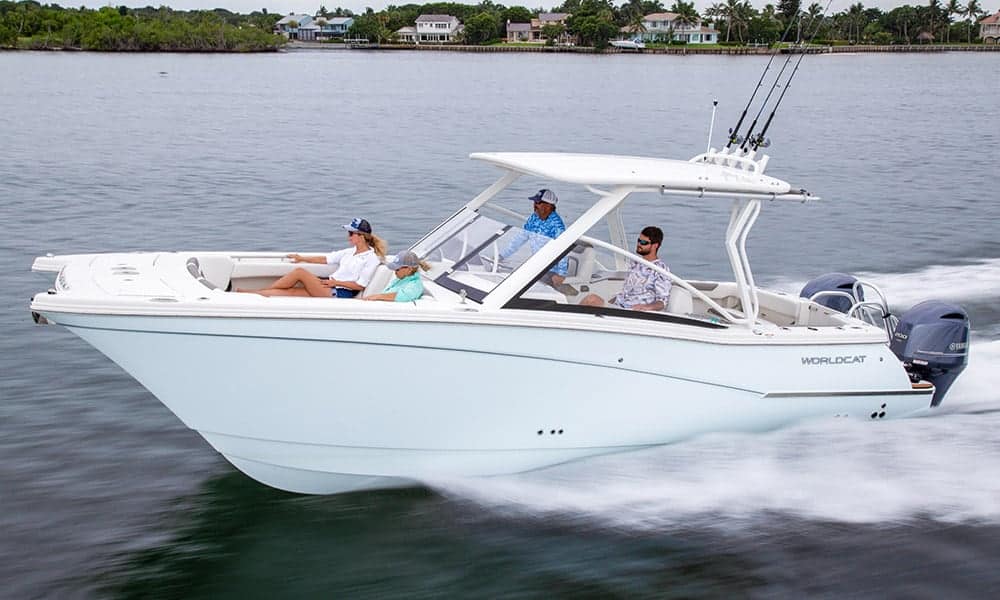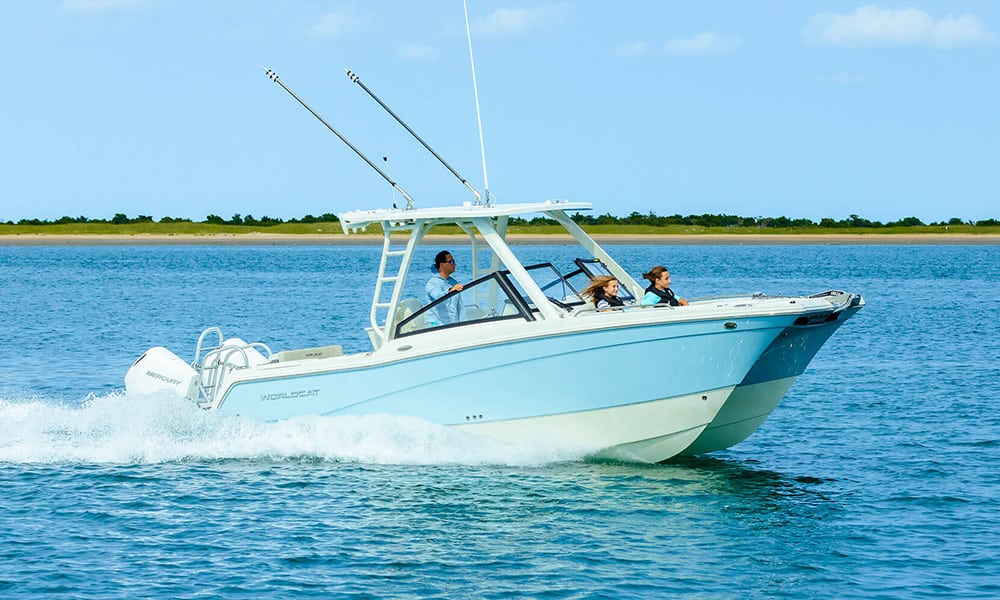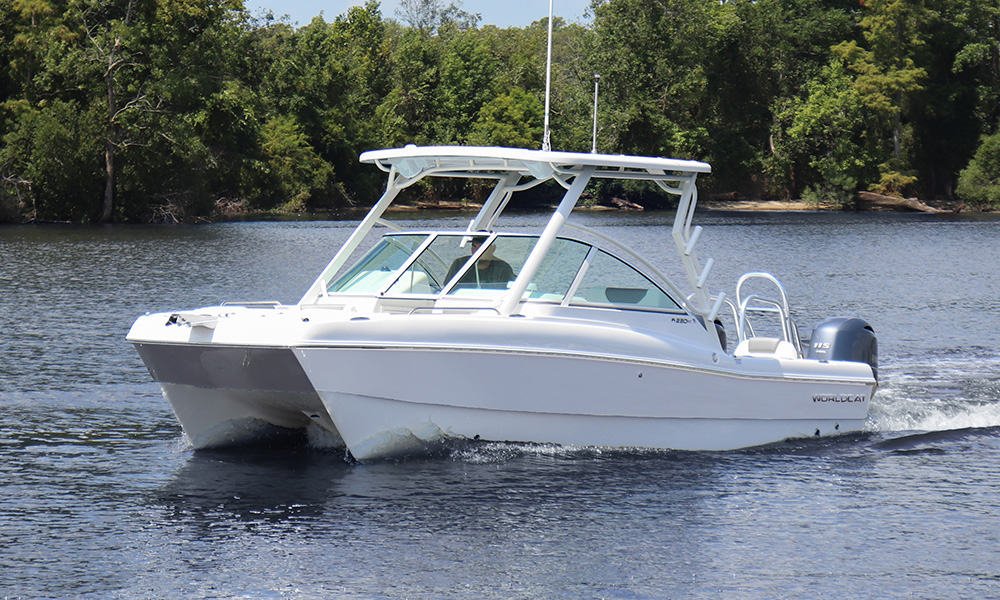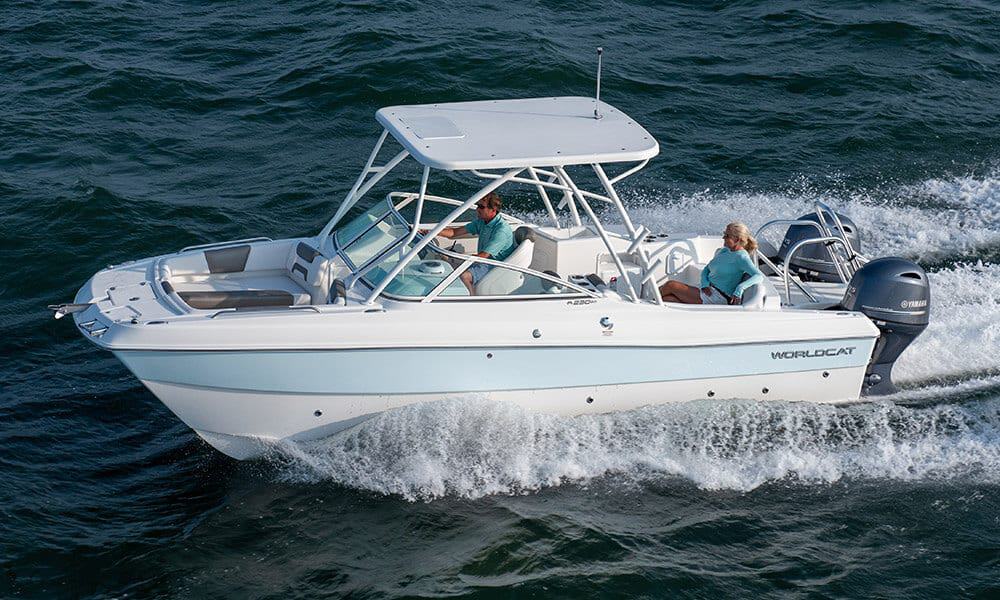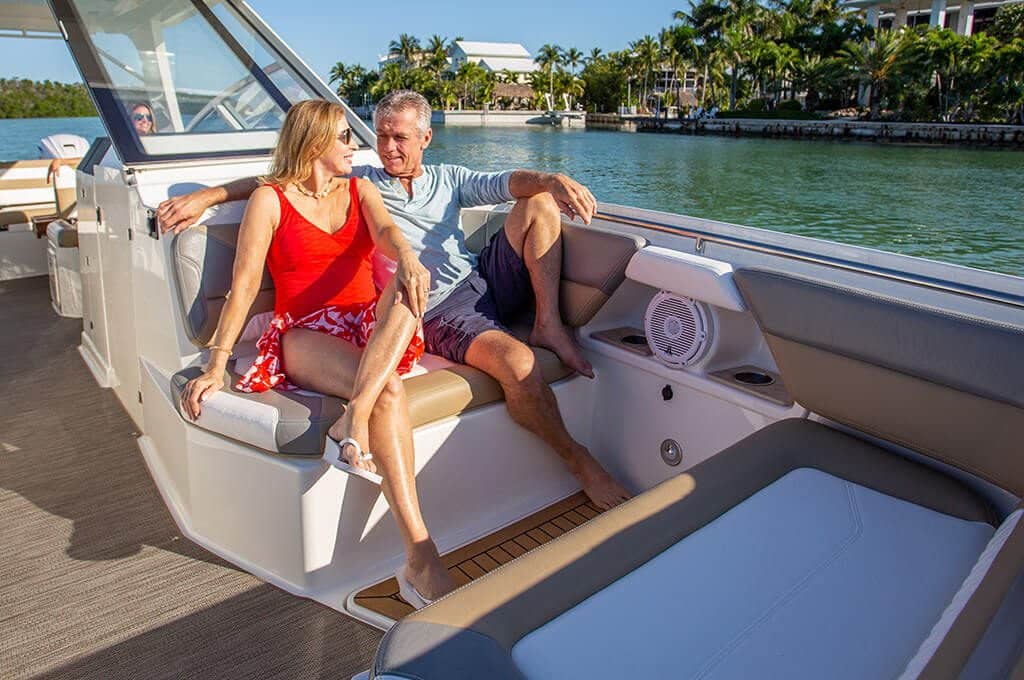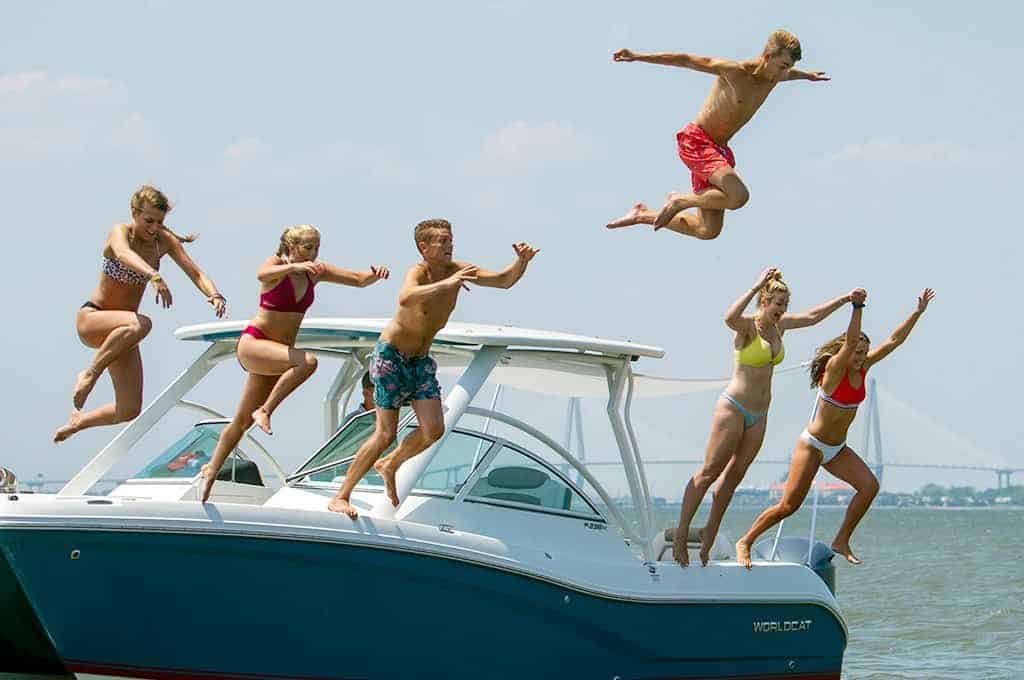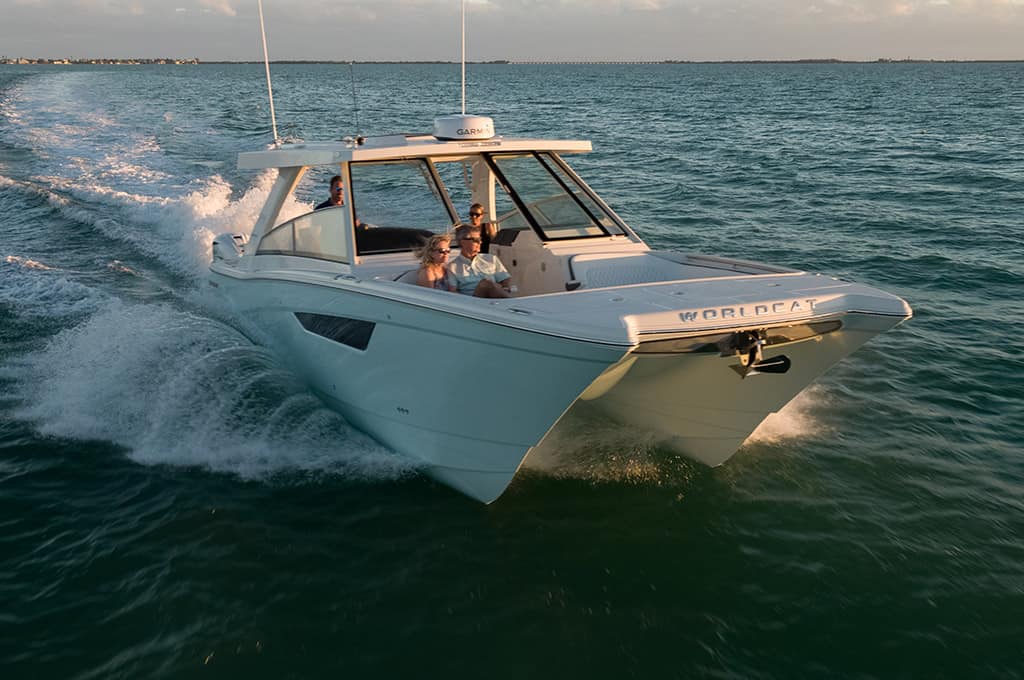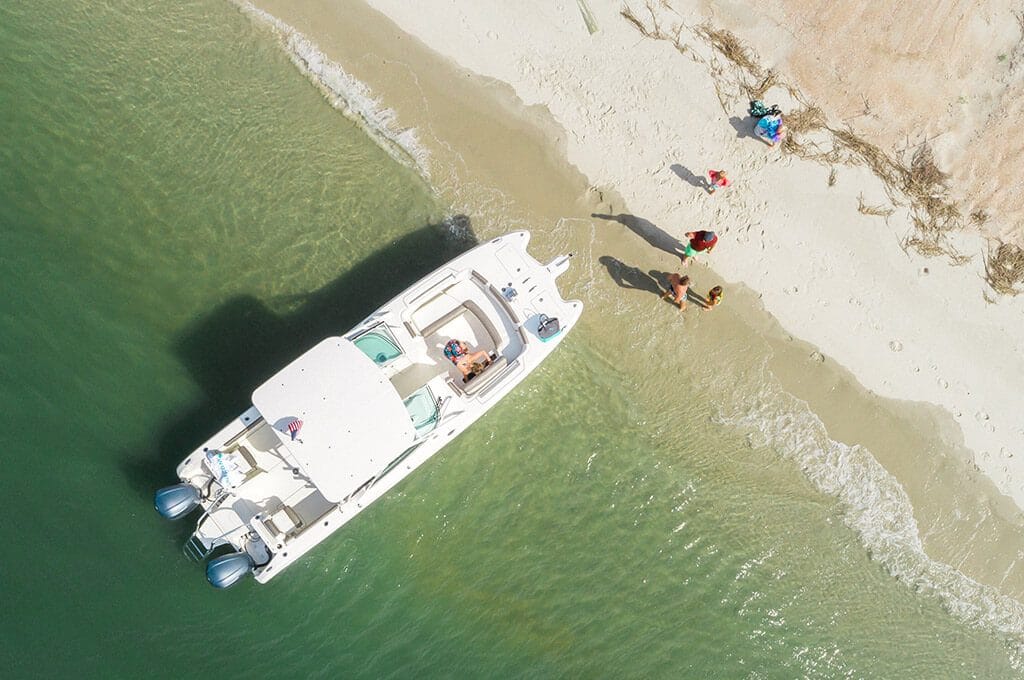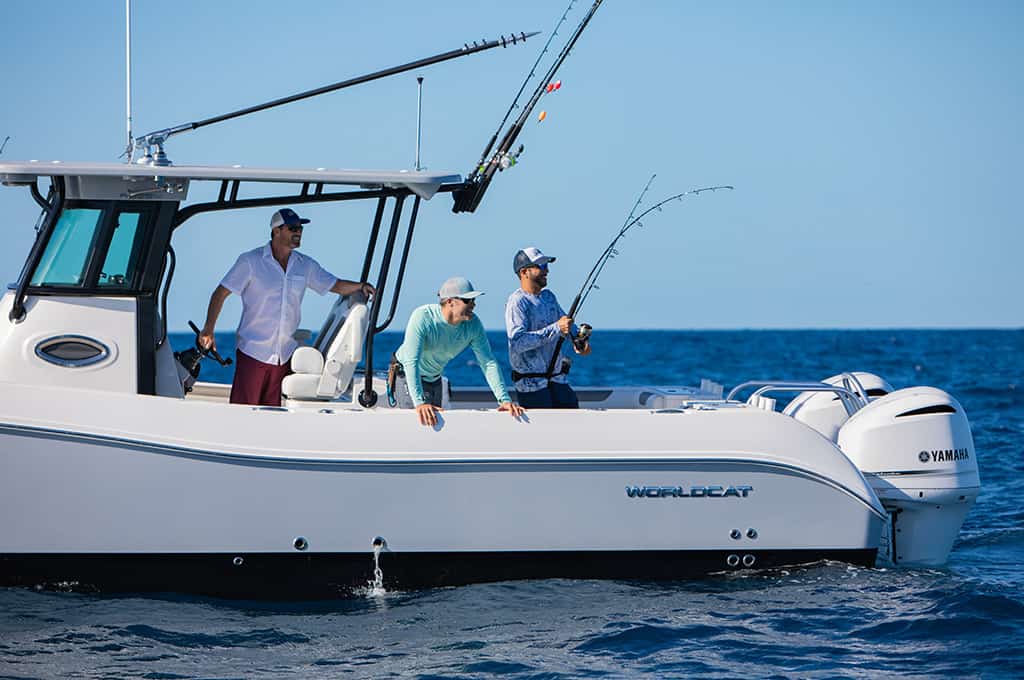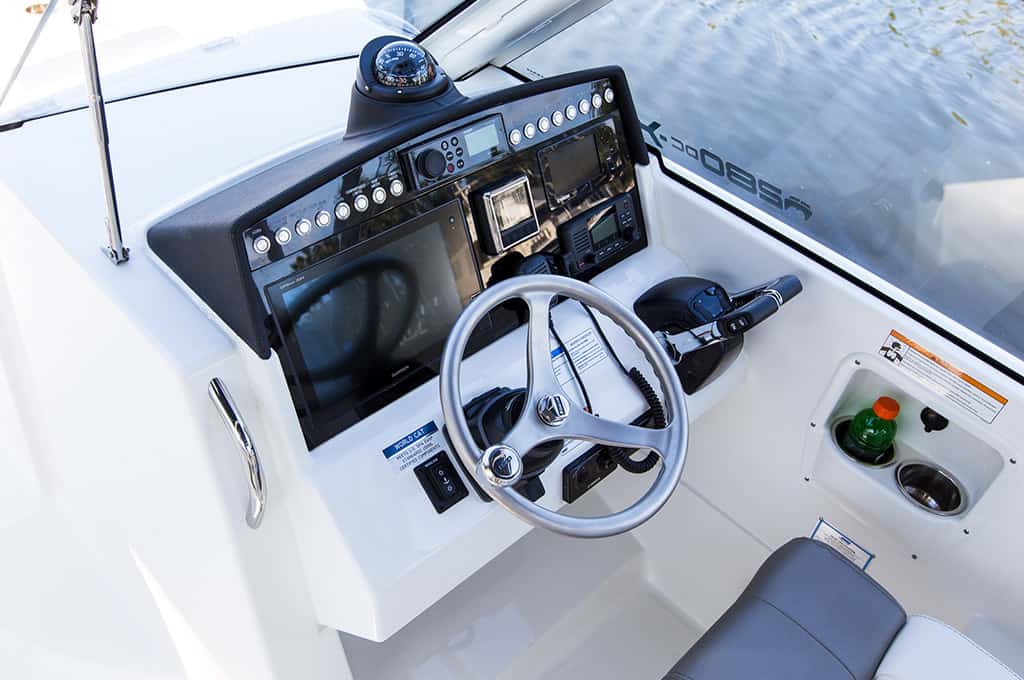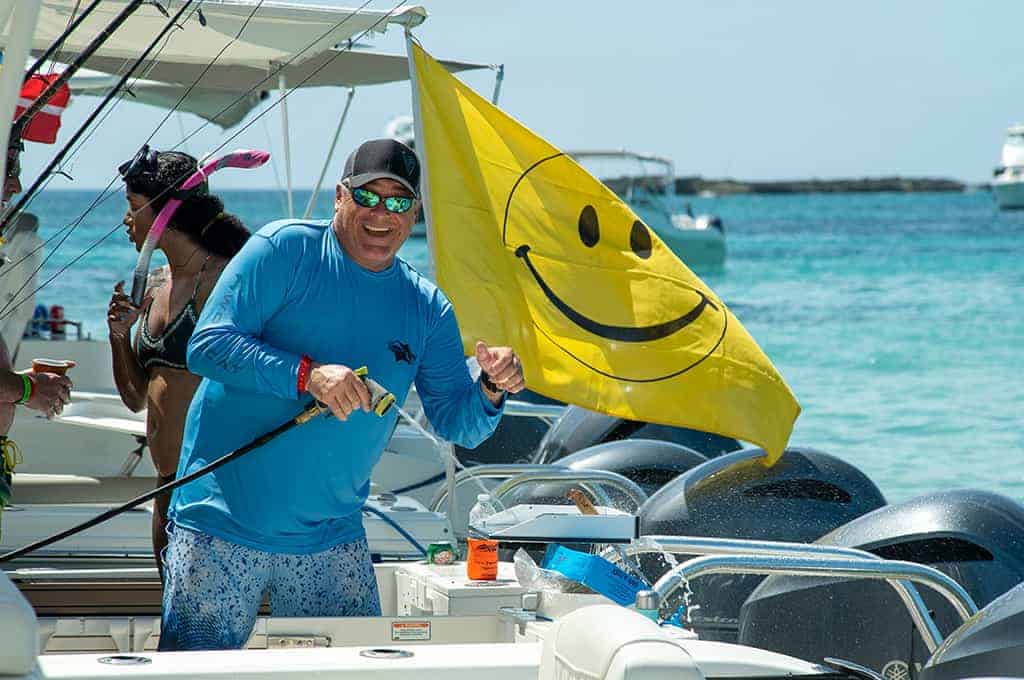Engineered for Comfort and Stability: Understanding the World Cat Difference
One of the most important features for any watercraft is how well it’s engineered for a comfortable ride. And that means comfort for all passengers. But many boats are designed around the comfort of just the captain, which leaves passengers at the front or sides of the boat left to endure a lot of pounding, slapping, and uncomfortable jostling.
The dual-hull design of a World Cat catamaran provides a better boating experience, hands-down. That’s because our catamarans are engineered to deliver three distinctive characteristics that are crucial for ride comfort: smoothness, load distribution, and stability. To understand why that matters, it’s important to understand a few critical differences between the two most popular types of boat hulls: dual-hull (catamaran) vs. monohull.
Take the Ultimate Sea Trial
A smooth, gentle ride is only the beginning. You’ll also experience superior off-shore performance, better stability and control, shallower draft, and race car-like speed in any and all sea conditions—including the roughest, most unpredictable water. Want to experience the World Cat difference yourself? Take a FREE World Cat Ultimate Sea Trial today. Sign up here.
Schedule Your Sea Trial >

Schedule a Sea Trial
Schedule a Sea Trial
Smooth Riding: When it comes to a smooth ride and overall comfort, the wider footprint of a dual-hull catamaran vessel helps negate the effects of unpredictable rolling while at sea—even in really rough waters. The efficient hull design reduces resistance and allows for faster headway, especially in tough conditions. On the other hand, the narrow design of a monohull vessel relies heavily on the calmness of the water to ensure a smooth ride. More bouncing, slapping, and choppiness is encountered due to more surface area that’s always in contact with the water.
Load Distribution: Load distribution is also a deciding factor when it comes to comfort. The catamaran’s rectangular shape uses space much more efficiently, giving passengers room to stretch out and enjoy the ride. Plus, passengers can enjoy the freedom to fish from either side of the deck without worry of weight distribution. In comparison, the monohull’s tendency is to rock and dip when passengers are boarding, offboarding, or moving about the boat. Think of it this way: it’s kinda like catamarans stand on two legs, while monohull vessels have to balance on one leg.
Deck space itself plays a big role when it comes to comfort. A catamaran beam is carried fully forward, and combined with two hulls vs. one, give the catamaran deck a rectangular design that creates more usable deck space. Meanwhile, monohull boats have a pinched bow that comes to a point, creating a triangular shape as opposed to a catamaran’s rectangular shape, making the use of space for a monohull a lot less efficient.
Stability: The parallel hulls of a catamaran create reliable stability, which prevents heeling and capsizing, and greatly reduces the vessel roll while at rest and trolling speeds. This drastically eliminates seasickness for passengers. A monohull, on the other hand, requires four-times less force to initiate a capsize vs. an equally sized catamaran, and a monohull’s single-beam style also makes it seven-times more prone to heeling than a similarly sized catamaran.
Worth noting, fuel efficiency is far greater with a catamaran. That’s because a catamaran hull experiences little to no drag or resistance to get on plane, resulting in greater fuel efficiency. Catamarans have a steady rise in speed and fuel burn with little to no spikes in fuel consumption. In contract, the bow/keel drag created by a monohull vessel is higher than that of a catamaran, which means greater displacement. The monohull encounters higher resistance, taking longer to plane, and spikes in speed and fuel consumption at mid-range.
If you’re a boater, you know about the pounding, slapping, exhausting ride you’re subjected to with a monohull vessel. But, with a World Cat power catamaran, you get a smoother, more stable ride. And that means no more physical abuse—for you or your family and friends. So you can stay on the water longer, and go farther, and you’ll come back to shore with more energy and fewer bruises. Plus, with all that comfort, you’ll have the confidence to head out in conditions that keep other boaters at shore.
Want to view the ultimate boat comparison? In this exciting video, we dive deep into the world of boating as we pit the World Cat 400CC-X against a well-known monohull brand. See the side-by-side comparison here.

